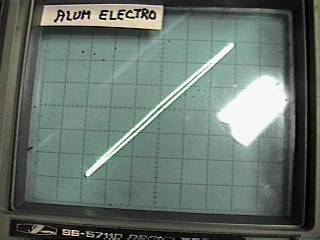

The Sound of Capacitors - Capacitor Linearity
Many people believe there is a distinct sound to different types of capacitors. This article covers this topic by examining the linearity (or deviations from linearity) associated with different capacitor types.
Background
A capacitor is an energy storage device. The capacitance value is related to the size of the device plates, the spacing between them and the dielectric material of the media between the plates. In the simplest media (air or vacuum), the dielectric constant is unity. You can increase the value of the capacitance by inserting some material (such as paper, various plastics, mica, oxides etc) between the capacitor plates. Most material has a dielectric constant greater than unity, thus increasing the capacitance. However, there is a price to pay: this material may be nonlinear.
Most people are familiar with magnetic materials non-linearities. The familiar B-H curve describes this non-linearity. (The slope of the line is related to the inductance). Electrostatic materials have a similar property: the D-E curve. The slope of this curve is related to the capacitance value.
Obtaining the D-E curve
Again, using the more familiar "magnetic" analogy, you can obtain a B-H curve (well, actually a PSI vs I curve) by noting the E-M relationship:
E = L dI/dt.
If you sample the current flowing in an inductive circuit (x axis), and integrate the voltage across the inductor (y axis) this gives you a curve proportional to the B-H curve.
For a capacitor, the operative equation is:
I = C dV/dt
Thus, if you sample the voltage, and integrate the current, you get a curve that is proportional to the D-E curve of the part. Amazingly enough, real valued parts have a CURVE, not a straight line. They may also exhibit hysteresis, much as an inductor or transformer may. This introduces subtle forms of distortion and non-linearities, which can cause a loss of precision in musical reproduction. Note that there are also other mechanisms that can alter the sound, but this report concentrates only on the non-linearity introduced by the D-E curve.
Results
I measured several different types of parts, and captured the results (simply by training a camera at the scope). The value of each of the capacitors was constant, 0.1uF. The signal level was held constant at about 70 volts RMS at 600 Hz across the capacitors. (for about 26mA signal current). This is probably more than you would normally expect, and serves to show the results better. The capacitor types used in this experiment were HV ceramic, LV ceramic, aluminum electrolytic, tantalum electrolytic, paper and oil, polycarbonate film, polyester film, polystyrene film and silver mica. Here's the results:









Discussion
Notice the non-linearities associated with the electrolytics (mostly in the form of hysteresis, although tantalum is particularly bad). Also, notice the very apparent non-linearities associated with the ceramics. All of these are bad enough to be acoustically displeasing.
The paper in oil is extremely clean, best of the group. That may be one reason why some people prefer the sound of the paper capacitors. Although not recorded, oil capacitors in general appear to be very linear.
The polycarbonate is interesting. If you look carefully, you will notice a slight curvature that is reminiscent of a SE triode amp. Some people may prefer this sound. The mica shows a very slight hysteresis effect. The polyester also shows a slight hysteresis. The polystyrene appears to be intermediate between the oil and paper and the polycarbonate. It's almost as good as the oil and paper.
What sounds the best? That's up to you. I was recently asked to evaluate some new manufacture paper capacitors, and they sounded so good, I just had to find out why. This article is the result.
Steve